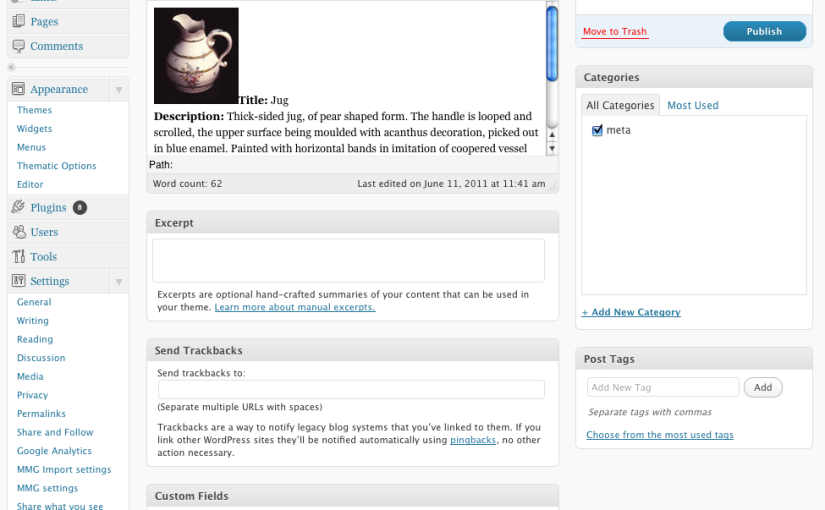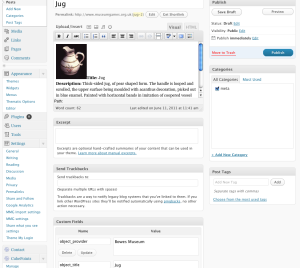A bit of an art museum/gallery-focussed post… And when I say ‘post’, I mean ‘vaguely related series of random thoughts’… but these ideas have been building up and I might as well get them out to help get them out of ‘draft’.
Following on from various recent discussions (especially the brilliantly thought-provoking MCG’s Spring meeting ‘Go Collaborate’) and the launches over the past few months of the Google Art Project, Artfinder and today’s ‘Your Paintings‘ from the BBC and the Public Catalogue Foundation, I’ve been wondering what space is left for galleries online. (I’ve also been thinking about Aaron’s “you are about to be eaten by robots” and the image of Google and Facebook ‘nipping at your heels’ to become ‘the arbiter of truth for ideas’ and the general need for museums to make a case for their special place in society.) Between funding cuts on the one hand, and projects from giants like Google and the BBC and even Europeana on the other, what can galleries do online that no-one else can?
So I asked on twitter, wondering if the space that was left was in creating/curating specialist interest and/or local experiences… @bridgetmck responded “Maybe the space for museums to work online now is meaning-making, intellectual context, using content to solve problems?” The idea of that the USP of an museum is based on knowledge and community rather than collections is interesting and something I need to think about more.
The twitter conversation also branched off into a direction I’ve been thinking about over the past few months – while it’s great that we’re getting more and more open content [seriously, this is an amazing problem to have], what’s the effect of all this aggregation on the user experience? @rachelcoldicutt had also been looking at ‘Your Paintings’ and her response was to my ‘space’ question was: “I think the space left is for curation. I feel totally overwhelmed by ALL THOSE paintings. It’s like a storage space not a museum”. She’d also just tweeted “are such enormous sites needed when you can search and aggregate? Phaps yes for data structure/API, but surely not for *ppl*” which I’m quoting because I’ve been thinking the same thing.
[Update 2, July 14: Or, as Vannevar Bush said in ‘As We May Think‘ in 1945: “There is a new profession of trail blazers, those who find delight in the task of establishing useful trails through the enormous mass of the common record.”]
Have we reached a state of ‘death by aggregation’? Even the guys at Artfinder haven’t found a way to make endless lists of search results or artists feel more like fun than work.
Big aggregated collections are great one-stop shops for particular types of researchers, and they’re brilliant for people building services based on content, but is there a Dunbar number for the number of objects you can view in one sitting? To borrow the phrase Hugh Wallace used at MuseumNext, ‘snackable‘ or bite-sized content seems to fit better into the lives of museum audiences, but how do we make collections and the knowledge around them ‘snackable’? Which of the many ways to curate that content into smaller sets – tours, slideshows, personal galleries, recommender systems, storytelling – works in different contexts? And how much and what type of contextual content is best, and what is that Dunbar number? @benosteen suggested small ‘community sets’ or “personal ‘threads'” – “interesting people picking 6->12 related items (in their opinion) and discussing them?”. [And as @LSpurdle pointed out, what about serendipity, or the ‘surprising beauty’ Rachel mentioned?]
I’m still thinking it all through, and will probably come back and update as I work it out. In the meantime, what do you think?
[Update: I’ve only just remembered that I’d written about an earlier attempt to get to grips with the effects of aggregation and mental models of collections that might help museums serve both casual and specialist audiences in Rockets, Lockets and Sprockets – towards audience models about collections? – it still needs a lot of thought and testing with actual users, I’d love to hear your thoughts or get pointers to similar work.]

